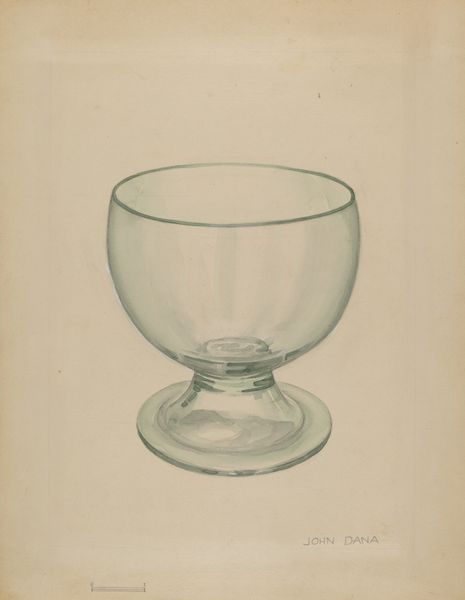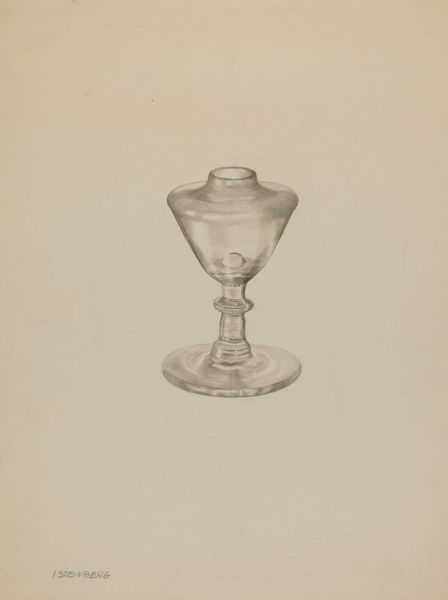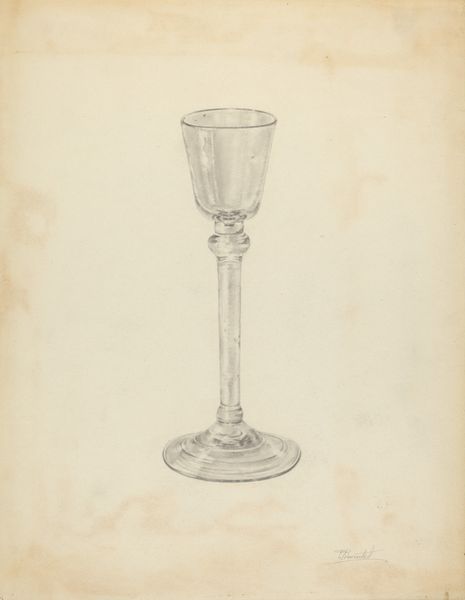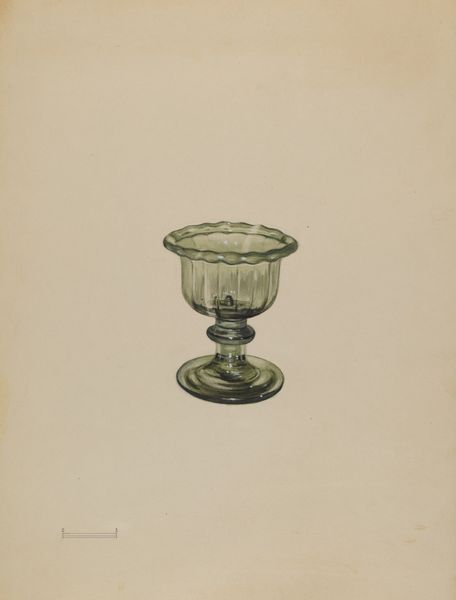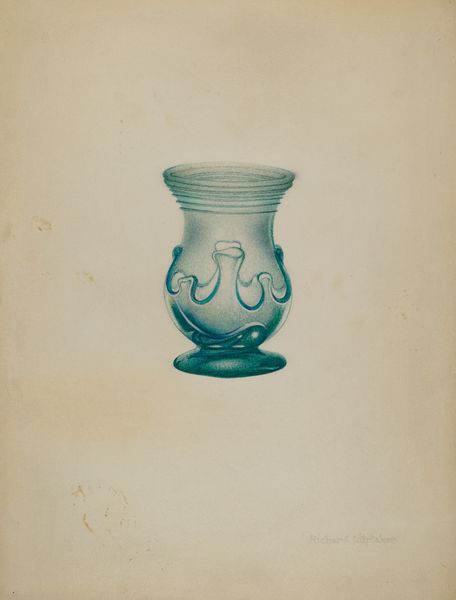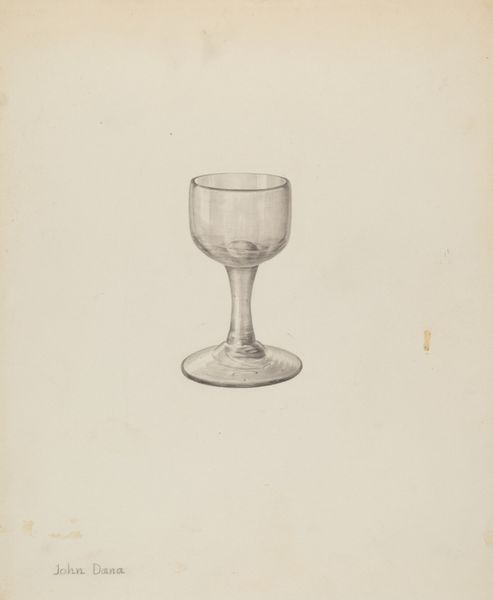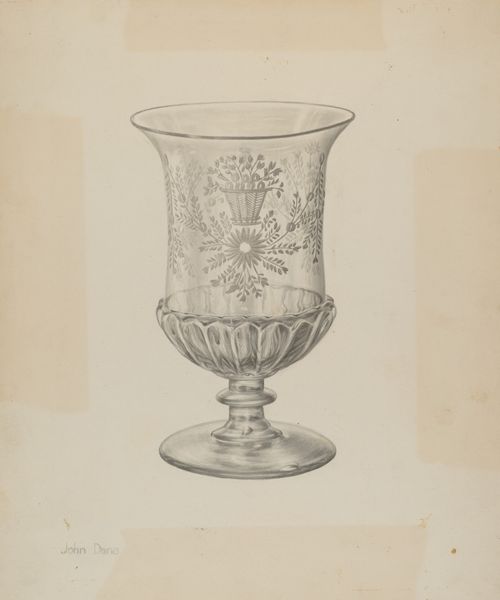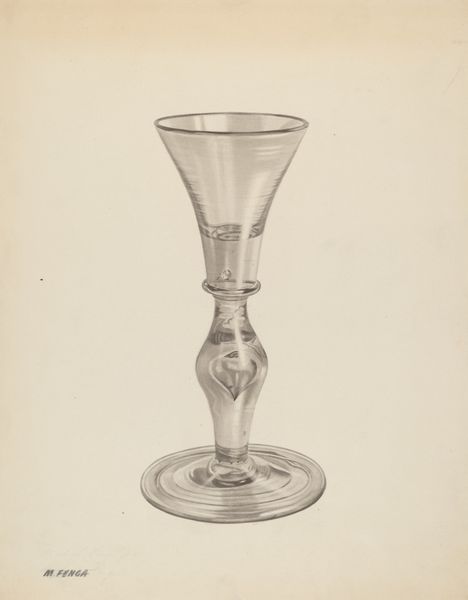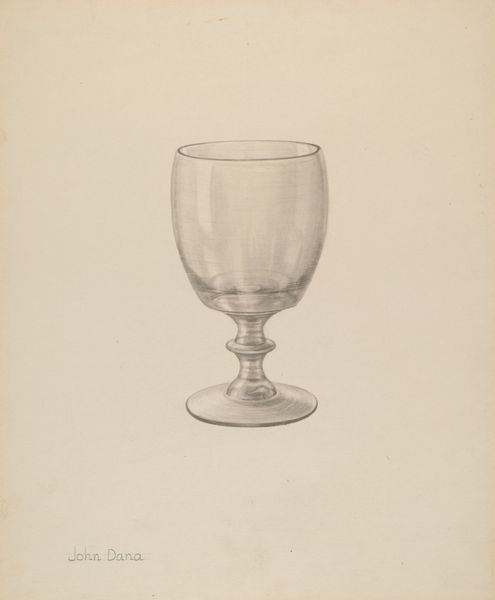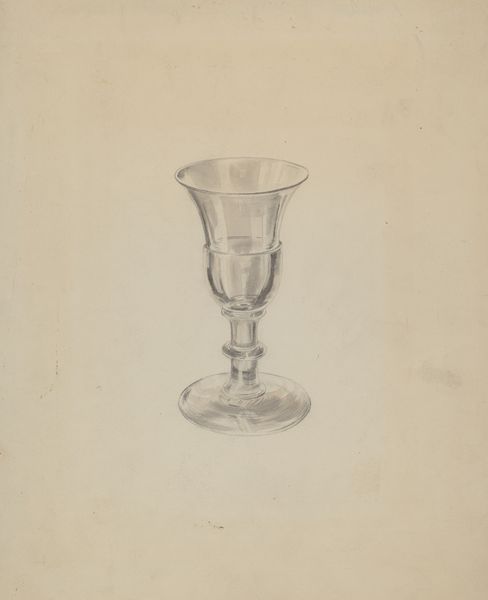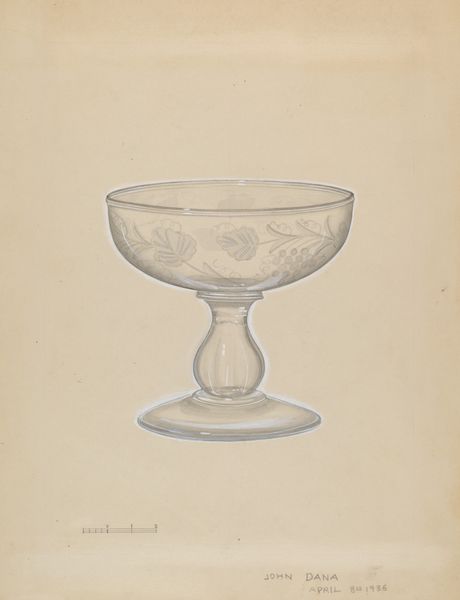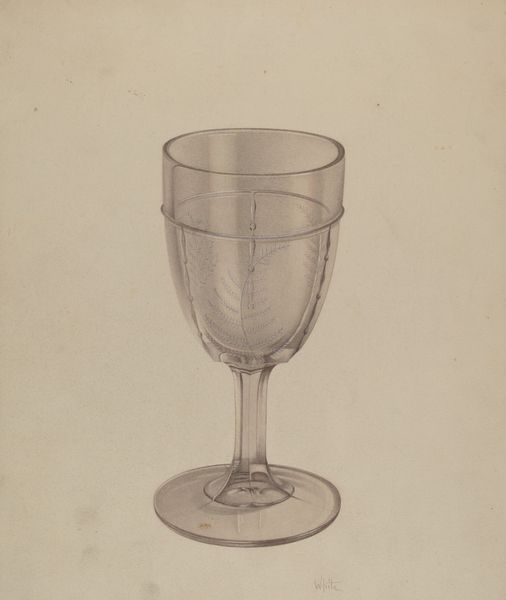
drawing, glass
#
drawing
#
glass
#
watercolor
Dimensions: overall: 36.7 x 30.2 cm (14 7/16 x 11 7/8 in.)
Copyright: National Gallery of Art: CC0 1.0
Editor: Here we have Giacinto Capelli’s “Blown Glass,” created sometime between 1935 and 1942. It looks like a watercolor drawing. It’s a fairly simple image of a stemmed glass. What's striking is its delicate quality - what do you make of this unassuming piece? Curator: Its simplicity is deceiving. Looking at this image through a historical lens, consider the social context of the late 1930s and early 1940s. What do images of domestic objects like this offer to the viewer during the rise of Fascism? Perhaps an idealized vision of simple pleasures? Editor: So you're saying it might be more than just a pretty glass? That it's also a social or political commentary? Curator: Not necessarily commentary, but a form of visual comfort, maybe even resistance. Watercolors and drawings lack the prestige associated with the oil paintings of the time. Why focus on humbleness in material as well as subject matter? Consider the function of decorative arts displayed within museum settings in the late 30's and early 40's in Italy. How would an artwork like this fit within these exhibition practices? Editor: I see what you mean. The focus on a simple, everyday object becomes significant within that historical context. It sort of elevates the ordinary. Curator: Exactly. Consider how museums then and now construct value. They place art within a social, economic and ideological framework. Editor: That’s really interesting. I would have never considered all of the politics of imagery at play with something as simple as a glass. It definitely changes how I look at not just this drawing but objects within museum spaces, period. Curator: Agreed. We are forever in dialogue with historical processes.
Comments
No comments
Be the first to comment and join the conversation on the ultimate creative platform.
